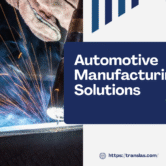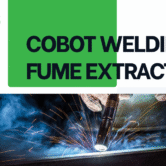
Best Weld Fume Extractor in United States Options Revealed
Introduction
Construction, manufacturing, fabrication, automotive, aerospace, and industrial production all heavily rely on welding. However, controlling welding fumes is a significant issue that comes with welding. When improperly managed, these fumes—which include microscopic metal particles, gasses, and vapors—can result in respiratory disorders, long-term health concerns, and occupational safety risks. Because of this, selecting the appropriate weld fume extractor is crucial for both safety and compliance in American factories, shops, and job sites.
Why You Need a Weld Fume Extractor in the United States
Welding fumes are a known health risk in addition to being an annoyance. Particles of metals like manganese, aluminum, chromium, and nickel are frequently found in them. Long-term health, the neurological system, and the lungs can all be impacted by prolonged exposure. As a result, appropriate fume removal systems are highly recommended by OSHA and US occupational safety regulations.
In American workplaces, using a top-notch weld fume extractor helps lower exposure, manage airborne pollutants, and preserve safe working conditions. The appropriate extractor eliminates dangerous particles before employees breathe them in, regardless of whether you are welding carbon steel, aluminum, stainless steel, or specialty alloys. This is particularly crucial in enclosed areas with poor ventilation.
Types of Weld Fume Extractors Available
Before choosing the best option, it’s helpful to understand the different types of weld fume extractor in United States systems available on the market:
1. Portable Fume Extractors
For mobile welding, maintenance tasks, and small shops, portable equipment are perfect. They are adaptable and practical because they may be rolled or carried to any workspace. Because they collect vapors at their source, many fabricators choose them.
2. Stationary Units with Extraction Arms
These systems stay in one spot and include an adjustable arm that brings suction right to where welding occurs. They are perfect for workstations set up for repeated daily welding.
3. Centralized Fume Extraction Systems
These systems link a single, sizable filtration system to several welding stations. They are frequently utilized in production lines, training facilities, and manufacturing plants. They provide strong, reliable fume control, despite their higher initial cost.
4. On-Torch Extraction Systems
These devices use the welding torch to directly extract fumes. They eliminate the need for big hoses or arms and offer the closest method of source capture.
The ideal option will depend on your workflow, available space, and daily welding requirements. Each type of weld fume extractor in US facilities has distinct benefits.
Top Weld Fume Extractor Options in the United States
While there are many brands available, U.S. welding professionals often look for reliability, ease of maintenance, strong airflow performance, and durability. Below are the most valued categories of extractors:
Portable High-Vacuum Extractors
Great for small shops, mobile work, and contractors, these units filter fumes efficiently and can be moved easily. They work well for occasional or light-to-medium welding tasks.
Industrial Arm-Based Extractors
These stationary systems are built for daily use and heavy-duty welding. The articulating arm allows welders to position the extraction point precisely where fumes are created.
Centralized Multi-Station Systems
Large manufacturing environments often rely on centralized extraction. In addition, these systems handle continuous welding work and filter air for multiple stations at once. As a result, they provide strong ROI for facilities that prioritize long-term air quality.
Built-In Torch Extraction
Using torches that capture fumes directly at the arc is becoming more and more popular. These solutions eliminate the need for large external equipment, minimize cloud accumulation, and stop cross-draft interference.
The objective is the same regardless of the model you select: a weld fume extractor in US facilities that keeps fumes out of the breathing zone and maintains cleaner air throughout the shop.
How to Choose the Best Weld Fume Extractor
Here are key points to consider:
1. Workspace Size
A small workshop may benefit most from a portable unit, while a large factory may require a centralized system.
2. Frequency of Welding
Daily production environments need a more powerful weld fume extractor in United States operations compared to occasional welders.
3. Type of Metals Welded
Some metals create more hazardous fumes, requiring stronger filters and higher suction.
4. Source Capture Efficiency
The closer the extractor is to the weld arc, the better it removes hazardous fumes.
5. Maintenance Requirements
Look for long-lasting filters, easy cleaning features, and alert systems for filter replacement.
6. Noise Level
Lower-noise extractors contribute to a more comfortable work environment.
By evaluating these factors, you can find the ideal weld fume extractor in United States for your specific needs.
Maintenance Tips for Long-Term Performance
To ensure your extractor operates at peak performance:
- Replace filters regularly
- Clean dust collectors and pre-filters
- Check hoses and arms for blockages
- Keep airflow pathways clear
- Inspect motors and fans for wear
Regular maintenance ensures that your weld fume extractor in United States continues to remove contaminants effectively.
Conclusion
Translas places a strong emphasis on worker safety, innovation, and cleaner workplaces. Their guiding principles are to ensure that welders breathe safely, improve air quality, and capture hazardous emissions at their source. Motivated by that idea, the best weld fume extractor in US settings is the one that puts the health of the welder first. The proper extractor contributes to safer, cleaner, and more efficient work environments, whether it is centralized, portable, or integrated right into the welding torch. In the end, purchasing a dependable weld fume extractor for US operations safeguards employees now and creates a more robust, healthy workforce down the road.




